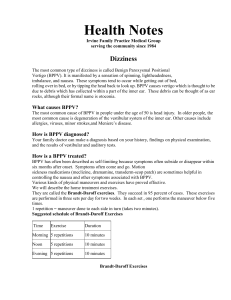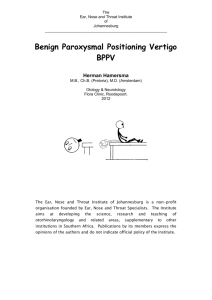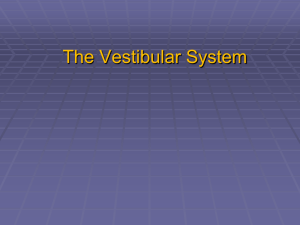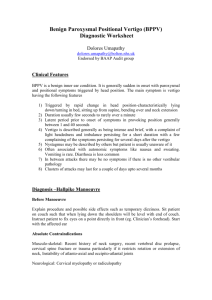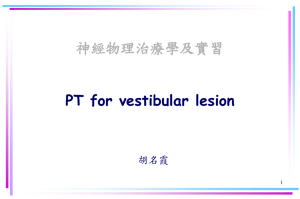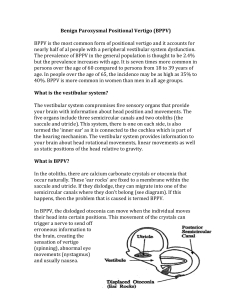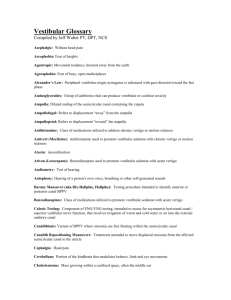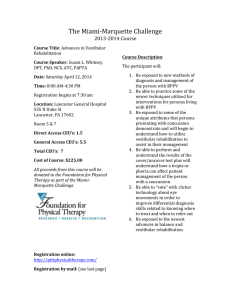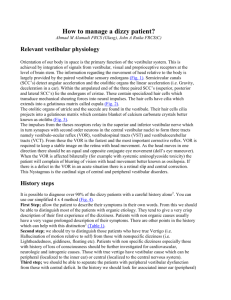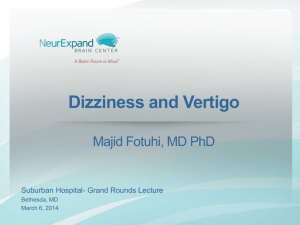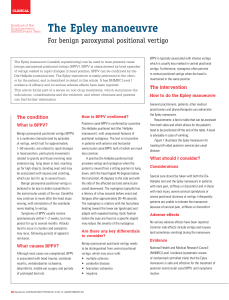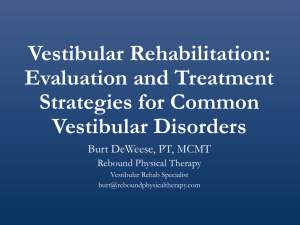BPPV - Otology Textbook
advertisement
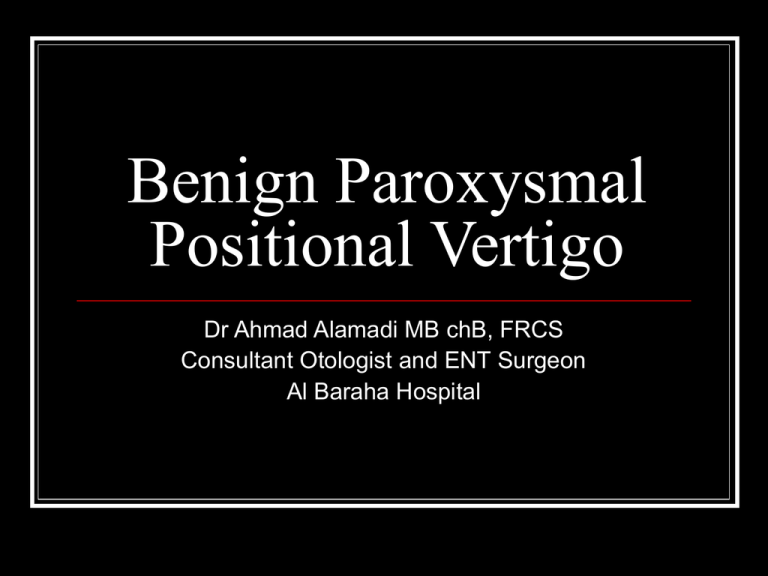
Benign Paroxysmal Positional Vertigo Dr Ahmad Alamadi MB chB, FRCS Consultant Otologist and ENT Surgeon Al Baraha Hospital BPPV Commonest vestibular disorder Incident 20: 100000 Coexist with other vestibular disorders Pathophysiology Floating particles originating from the otoliths in the utricle. Pathophysiology original theory of cupulolithiasis (i.e. particles attached to cupula) Etiology Spontaneous Viral Traumatic Meniere’s disease Post surgery Migraine? History Four steps Sharp clear history True rotatory vertigo No neurological history Positional( head up & turn in bed) lasting for seconds only, multiple attacks, no other ear symptoms Examination Four Steps Otologic examination normal Neurological examination normal Special vestibular tests normal Diagnostic Dix-Hallpike manoeuvre rotatory geotropic nystagmus on the affected side( can have up to 10 sec delay) in post canal BPPV and horizontal nystagmus in lateral BPPV Management Particle Repositioning Manoeuvre (PRM) Barrel roll by Eply for lateral canal BPPV Brandt-Daroff exercises for cupulolithiasis Surgical Management Posterior canal occlusion Singular neurectomy
